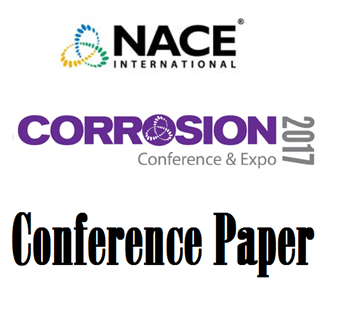Search
Pipelines, Tanks, and Underground Systems
View as
Sort by
Display
per page
51317--9560-Development of a Probabilistic Framework for Integrity and Risk Assessment of Unpigabble Pipelines
Product Number:
51317--9560-SG
ISBN:
9560 2017 CP
Publication Date:
2017
$20.00
51317--9598-HDD Alternative Testing
Product Number:
51317--9598-SG
ISBN:
9598 2017 CP
Publication Date:
2017
$20.00
51317--9602-Fitness for Purpose of Low Temperature Cure Liquid-Applied Coating Systems for Pipeline Maintenance
Product Number:
51317--9602-SG
ISBN:
9602 2017 CP
Publication Date:
2017
$20.00
51317--9648-Correlation of Inline and Aboveground Integrity Data for Comprehensive Pipeline Integrity Management
Product Number:
51317--9648-SG
ISBN:
9648 2017 CP
Publication Date:
2017
$20.00
51317--9649-Corrosion Management Planning Lessons for Seawater Conveyance in Mining
Product Number:
51317--9649-SG
ISBN:
9649 2017 CP
Publication Date:
2017
$20.00
51317-9658-Evaluation of Anti-fouling Surfaces for Prevention of Lead Sulfide Scaling in Single and Multiphase Conditions
Product Number:
51317-9658-SG
Publication Date:
2017
$20.00
51317--9711-Review of Recent Developments in Induced AC Current Corrosion Mitigation Design Materials Installation and Monitoring Technologies
Product Number:
51317--9711-SG
ISBN:
9711 2017 CP
Publication Date:
2017
$20.00
51317--9729-Enhanced Corrosion Management Analysis of Pipelines
Product Number:
51317--9729-SG
ISBN:
9729 2017 CP
Publication Date:
2017
$20.00
51317--9741-Corrosion Detection Using Robotic Vehicles in Challenging Environments
Product Number:
51317--9741-SG
ISBN:
9741 2017 CP
Publication Date:
2017
$20.00
51318-10522-Role of Microstructure in the Susceptibility of X42 ERW Linepipe to CO2 Preferential Weld Corrosion
Product Number:
51318-10522-SG
Publication Date:
2018
$20.00
51318-10604-Impedance models and water transport behaviors of steel pipes coated with cathodically polarized enamel
Product Number:
51318-10604-SG
Publication Date:
2018
$20.00
51318-10838-Evaluation of MIC research in UST under the influence of biodiesel
Product Number:
51318-10838-SG
Publication Date:
2018
$20.00












